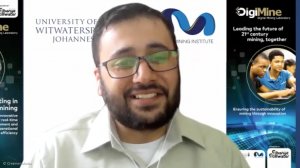JOHANNESBURG (miningweekly.com) – Johannesburg- and New York-listed platinum group metals, green metals and gold mining company Sibanye-Stillwater is funding a brainstorming ‘techathon’ on the challenge of storing carbon in suitable host rock environments in underground mines as part of an environmental protection imperative.
“We have recently started research where the focus is to find the suitable places underground where we can store the carbon,” University of the Witwatersrand’s Wits Mining Institute DigiMine Laboratory head Ahsan Mahboob told Mining Weekly in a Zoom interview. (Also watch attached Creamer Media video.)
“It will help the mining industry because there's a carbon price and mining companies can store carbon in their operations and save a lot on the carbon pricing while also having a positive impact on the environment,” said Mahboob.
Mahboob described as dire the need to conduct research to identify underground sites with suitable host rock endowment.
“Once the carbon is pumped underground, the next step is to monitor the carbon values on a daily basis and receive data in real time in control rooms to ensure that the stored carbon stays there.
“We have the sharp minds in the country who will come forward and solve these challenges with us,” said Mahboob, who aims to hold the brainstorming ‘techathon’ event at the end of June or in early July.
“It’ll be an open, innovative competition and we’re very hopeful that once we have innovators under one roof, we’ll get the solutions.
“The idea is to come up with a solution that can be rolled over to the mining industry at some stage,” said Mahboob.
Mining Weekly: Who will own the intellectual property (IP) that might emerge?
Mahboob: We’re sorting out the legalities. The funding is from Sibanye-Stillwater through DigiMine. We at DigiMine are looking forward to that funding as a seed funding for that particular one group to convert the proof of concept to proof of value. The background IP will be jointly shared by DigiMine, Wits University and Sibanye and the foreground IP will belong to the group of individuals who come up with the solutions – and I believe in the longer run, the IP will be jointly shared by the winning group and university as well.
EVENTUAL UTILISATION TARGETED
On the conclusion of the first phase of the research, the second phase will focus on the potential utilisation of the stored carbon.
“The research focus in one of the universities in Germany is on how we can use this carbon either in a positive way, for example, in a mix for other industries, or to reduce its concentration with other chemicals or gases.
“My personal aim will be on how we can use the carbon for the beneficiation of the mining industry,” said Mahboob.
Mining Weekly: How is the carbon stored?
Mahboob: Think of a big pool underground that can be filled with carbon in the same way as a swimming pool is filled with water. It's not new research but its application in mining is new. What is already happening is the capturing of carbon from the atmosphere and the pumping of it into deep underground vessels through a network of pipes and other channels. Once the carbon is there, the big challenge is to keep the carbon there and one of the key components of carbon storage is host rock and this is where the research and development is required because right now, we have very limited information on the most suitable host rocks where carbon can be stored for long durations. Once mining companies conclude their operations in identified underground areas, we can use those mined-out areas to store and retain carbon for a long duration.
Petroleum company Shell is involved with the biggest projects of this nature that are happening in the world. Shell is basically storing carbon in underground environments. By pumping carbon into underground, they are basically releasing the negative impacts from their daily operations, and the carbon is not releasing into the atmosphere. In South Africa, we don't have what we call carbon pools ground and there is a dire need to conduct research to identify those suitable locations underground. One of the potential areas is in the northern part of the country, where we have the suitable underground rocks, into which carbon can be pumped. Once the carbon is pumped underground, the next step is to monitor the carbon values on a daily basis and receive data in real time in control rooms to ensure that the stored carbon stays there.
Mining Weekly: In what ways can South Africa’s mining sector benefit from DigiMine’s new green energy and minerals technology offering?
Mahboob: For the last five years, the focus of DigiMine has been the application of digital technologies, particularly to put distance between risk and mineworkers in an underground mining context. We have observed, particularly post-Covid, that globally the focus has shifted to the low carbon economy and the just energy transition. There is now a dire need to start the research and development into not only green energy minerals but also green technologies. Most South African mining operations are energy-intensive operations and there is a need to do the research and development in renewable energy. Most important is to find the green minerals required to build solar panels. South Africa has the largest reserves of solar minerals. At DigiMine, the focus is firstly to build a comprehensive database of these green energy minerals and technologies so that, in the future, DigiMine will serve as a powerhouse for all the mining companies. Whenever there is a need for green energy minerals or green technologies, everyone will be able to come to DigiMine.
EMAIL THIS ARTICLE SAVE THIS ARTICLE ARTICLE ENQUIRY
To subscribe email subscriptions@creamermedia.co.za or click here
To advertise email advertising@creamermedia.co.za or click here










